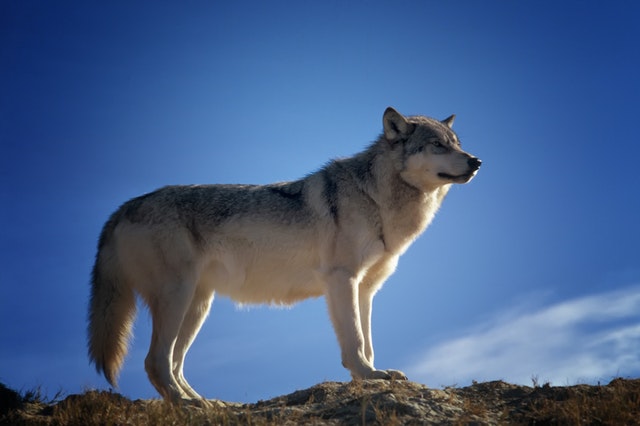
Image Credit: Pixabay
Before you bother looking for the best shampoo for Husky, you first need to understand the proper way of grooming your pet. You see, that is the common mistake among many pet parents. They think that shampoo is all that there is to proper pet care, especially physically. However, keep in mind that it is only one of the many things necessary to maintain your Husky’s coat and skin.
In this article, we will discuss the importance of your four-legged pal’s coat and skin. By doing so, we will understand the proper maintenance. Also, it will help us determine the right tools for the task.
Everything You Need To Know About A Husky’s Coat
Originally bred for and in low-temperature areas, a Husky has two layers of coat. These include an undercoat that provides insulation during the winter season; and a weatherproof outer coat that grows through the former. The latter is important because it protects the insulating undercoat. Since it is weatherproof, a Husky’s body remains dry during rainy or snowy seasons.
When your Husky is born, he or she will have a soft fuzzy undercoat. The outer coat will start developing when he or she reaches 10 months old. For about four months, you should expect excessive shedding. At this point, your pet is losing all of his or her puppy furs as he or she grows two-layer adult coat. (See also: 6 Important Steps for the Training of Your Siberian Husky)
How To Maintain A Husky’s Coat
Now that we know how important your Husky’s coat is, it is easier for us to discuss the ideal maintenance routines aside from bathing him or her. Here are the do’s and don’t’s you need to remember:
Do: Shed
As temperature rises, expect your Husky to shed his or her undercoat, which grows thick during winter. Shedding may last up to two months, depending on how much your pet needs to release to feel comfortable. Undeniably, it can be a lot of work for you. It will surely mess your house up. So, to prepare for shedding season, I suggest that you invest in a vacuum cleaner. This tool will allow you to deal with the problem easily.

Photo credit by monicore on Pixabay
Do: Brush
During the non-shedding season, you need to brush your pet’s coat for a couple of minutes every week. Making a habit out of this will allow your Husky’s skin to yield nourishing, natural oils. Brushing is also a good practice after every bath.
Don’t: Clip and/or Shave
Clipping and/or shaving your Husky is not recommended. You need to let him or her shed, his or her undercoat naturally. If you clip and/or shave the outer layer of his or her coat, you are getting rid of your pet’s protection from UV rays. Also, you would not want his or her coat growing back unevenly.
Moreover, there are Huskies with extremely sensitive skin. Clipping and/or shaving their coats may cause skin issues.
How Important Is Finding And Using The Best Shampoo for Husky?
As we have talked about earlier, your Husky’s shampoo is just one of the many tools you need to keep his or her coat and skin smooth and shiny. So, what are the other things required for proper coat maintenance? Here are your companions:
Brush
You now know that regularly brushing your pet’s coat makes all the difference. So, choosing the best brush for dogs with two-layer coats is also an important decision. A brush comes handy during the non-shedding season.
Conditioner
I am sure you are wondering why you still need a conditioner and why you cannot just use a shampoo alone. Well, these two bathing essentials have different purposes. A shampoo is for removing dirt from your pet’s coat and skin. Meanwhile, a conditioner seals your pet’s hair cuticle after applying shampoo. So, using a conditioner helps restore elasticity, hydration, and moisture that are lost when shampooing your Husky.
Undercoat Rake
While a brush is enough, an undercoat rake offers an extra hand. It allows you to get into your Husky’s undercoat, especially when it has grown extremely thick. With its soft edges, your pet will not have a hard time as you get rid of loose fur. If anything, he or she will find it relaxing. Needless to say, it is perfect for use during shedding season.
How Often Does a Husky Need to Bathe?
Unlike many dog breeds, a Husky does not have an oily coat. So, your pet is less likely to develop a bad odor in a short period. Hence, only a few baths a year is required. In fact, about two baths will do unless your pet has gotten really dirty playing around or is suffering from flea issues.
Among Huskies, regular baths dry out their coats. You would not really want to strip that protective covering of its purpose, of course. If you do not like bathing your pet by yourself, you can always take him or her to a pet grooming shop. Since your Husky only needs two baths a year ideally, it would not hurt your pocket that much.
If you live in areas with a winter season, it is even better. Huskies love rolling over in the snow. In fact, it is what keeps them clean without the help of baths.
Summary
Grooming your pet properly is crucial in keeping him or her healthy through the years. However, it is a common mistake among first-time Husky owners to consider shampoo as the most important grooming essential. So, before you stress yourself out looking for the best shampoo for Husky, consider other factors as well.

Photo credit by iannnnn on Pixabay
Without the best brush, the best conditioner, and the best undercoat rake, the best shampoo is useless. More importantly, these items are useless if you do not know how to care for your Husky correctly. Nonetheless, there are just a few do’s and don’t’s that you need to remember and you are good to go.
I hope you have learned something new in our discussion today. Feel free to ask questions, should you have any. Also, do not forget to share this article with your friends! Your support means a lot to our community!
About The Author:
Jennifer Wood is the proud parent of five dogs of different breeds. Given her broad experience as a professional trainer in her younger years, she excels in dog behavior and training techniques. Believing so much in the intelligence of dogs, you will never win an argument with her about our furballs being man’s best friends. Aside from her personal experience, she also draws knowledge from research papers and other resource materials. She indulges in new findings and ethical scientific efforts to further become a better dog parent. In turn, she hopes to share useful information by writing blogs that everyone can access freely.




